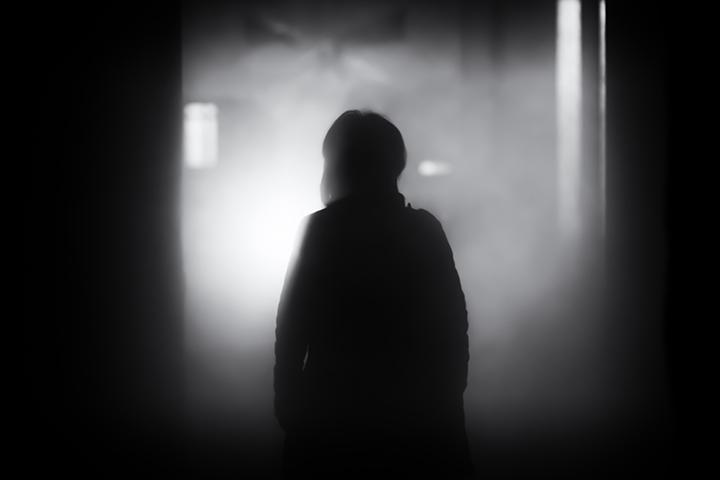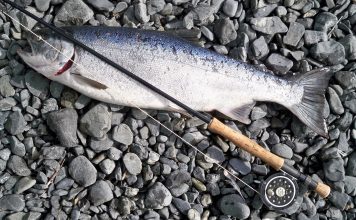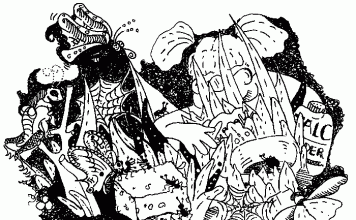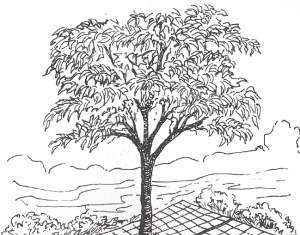 |
|
| Issue #87 • May/June, 2004 |
Reader mail indicates that while some Backwoods Home readers turn to this column for advice on putting wild game on the table or keeping four-footed poachers out of the garden, others are more interested in firearms for self-defense in lonely places. And, of course, there are readers who are concerned with family protection but don’t like guns. Let’s speak in particular to the latter two groups this issue. We’ll get away from firearms this trip, and look at something else related to personal safety: recognition of pre-assaultive behavior cues.
People have been hurtsometimes by strangers, sometimes by people they knew and lovedwhen they failed to realize that the other person was experiencing a level of hostility that was about to boil over. Being able to recognize body language associated with imminent violent action can allow you to, in the best-case scenario, disengage and leave the scene. At worst, it can give you time to activate a plan of self-defense soon enough to effectively protect yourself and those for whose safety you are responsible.
Danger signals
The eyes, it is said, are the windows to the soul. Often, the way in which a hostile person looks at you can be a predictor of what his plans are for you.

Cops, soldiers, and mental health professionals are all too familiar with “the thousand yard stare.” This is the person who seems to be not so much looking at you as through you. He may be unresponsive or inappropriately responsive in other ways. What this should tell you is that in this moment he is in an alternate reality of his own, a place where you are probably not welcome. When you see this, start “creating distance” unless you in fact are a law enforcement officer, health professional, or someone else who has a responsibility for containing and restraining this person’s actions.
The opposite of the thousand yard stare is the “target stare.” This is the guy who narrows his eyes and glares directly at you. The narrowing of the eyelids does for our vision what shutting down the f/stop on your camera does for the lens: it enhances depth perception. It tells you that you have become a very intense focus of his attention. If the circumstances indicate that this individual is at all hostile, the target stare is not a good sign. If you’re not a cop, psyche nurse, etc., Mother Nature is telling you again to start creating distance between you and him.
There is also “target glance.” Cops learned the hard way over the years that if a man casts a furtive glance in a certain direction, he may well be checking his avenues of escape: his quick look has just told the officers where he is likely to run. Is he staring at your chin? In a hostile situation, he’s not admiring your Kirk Douglas chin cleft and he hasn’t noticed a zit you missed this morning in the mirror. More likely, he’s thinking about sucker punching you right “on the button.” If his eyes go down to your crotch, he’s probably not a gay guy scoping out your package…more likely, he’s actively considering opening the fight with a kick to your crotch.
A brief aside to the shooters in the audience. You know how when you see a cop, you immediately look at his holster to see what sort of sidearm he’s wearing? Have you noticed that every now and then when you do that, you get a dirty look from the officer, who may step back or otherwise change his physical orientation to you? The reason is, he has been taught about pre-assaultive behavior cues, too, and he has learned to interpret a look at his holster as a “target glance” that may indicate the person is thinking about snatching his service pistol.
“Fight or Flight” indicators
When the brain perceives that we are about to be in a strenuous physical conflict, a primitive mammalian survival reflex kicks in which prepares us to do battle or to flee. Quantified in the early 20th Century as “fight or flight response” by Dr. Walter Cannon at Harvard Medical School, this phenomenon may reveal itself to another person with subtle physical manifestations…if that other person is sufficiently alert and informed to recognize what they’re looking at.

When we go into a high level of “body alarm reaction,” the lizard that lives in the base of our brain and controls the machinery and the thermostats decides to kick up oxygenated blood supply. The heart begins to race and the lungs begin to take in more air. Watch for rapid breathing or panting in a person who has not performed any strenuous physical activity. You may even be able to see a pulse throbbing at the neck or the temple of some individuals.
Now, let’s perform a process of elimination. There is no common danger that threatens those at the scene. You have done nothing to threaten him. Neither has anyone else. He has not been exerting himself. Yet, his blood vessels are pulsing violently and he is breathing heavily. By this process of elimination, we can determine where the fight or flight thing has come from: He has already decided that he is going to fight. (Or, if you are lucky, that he is going to run.)
The adrenal system instantly releases powerful chemicals in a fight or flight state, including epinephrine (“adrenaline”). One side effect of this is tremors, often violent ones, which will usually manifest themselves first in the non-dominant hand, almost immediately thereafter in the dominant hand, and then in the legs, particularly the knees. If you observe tremors in those locations in a situation that you perceive may turn hostile, go through that process of elimination again. Could the person be simply shivering in the cold? Do you have reason to believe he has Parkinson’s disease or some other ailment of which trembling is symptomatic? If not, you know the diagnosis, and you know the first step of treatmentcreate distance.
The body language of fight/flight
Facial expressions and body movements can give you early warning that the person you face has gone into fighting mode. All the way back to Dr. Cannon, certain cues have been recognized as classic.
The person is likely to “quarter,” that is, step back with one leg, turning his hips to something approximating a 45-degree angle. In this posture, the body is best balanced to take or deliver impact in any direction. Fighters call it the “boxer’s stance.” Martial artists call it the “front stance.” Shooters call it the “Weaver stance.” Cops are taught to stand this way, prepared immediately to react and fight, in an “interview stance.”

The hands will typically be up, between hips and face, usually level with some point on the torso. The fingers may be partially closed. (The hands clenched into fists, or opening and closing into fists repeatedly, is a particularly blatant sign that the “fight” side of “fight or flight” has been internally engaged.)
The knees may flex slightly. This is the true “combat crouch.” The head is likely to be slightly forward of the shoulders, and the shoulders forward of the hips. Combat trainers call this posture “nose over toes.” It’s what they teach their students to go into intentionally when they prepare to fight to the finish. When someone does it instinctively, it has given you what we in police work call “a clue”…
Life experience has already taught you that emotionally aroused people may not realize that their facial expression is reflecting their internal emotions outward for all to see. This happens in hostile situations too. A snarl that brings the lips back from the teeth doesn’t require a professional behaviorist to interpret for you: it clearly doesn’t bode well. The human is a natural carnivore, and a grimace that exposes the canine teeth is a particularly overt indication of aggressive intent.
A seemingly opposite expression can mean the same thing. Tightly clenched jaws, which may even include grinding teeth, and tightly pursed lips, can also be signs of extreme anger.
Let’s go back for a moment to fight or flight basics. The heart and lungs are sending oxygenated blood through the body as fast as they can. However, if no strenuous physical activity has yet taken place, the body is now over-oxygenating, and hyperventilation can set in. Generations of medical professionals have advised hyperventilating patients to breathe into a paper bag. This causes them to inhale carbon dioxide they’ve just exhaled, and helps to quickly restore a normal O2/CO2 balance.

As it happens, people in actual fight or flight situations don’t usually have access to paper bags. This includes both you, and your potential opponent.
If you are the one hyperventilatingat a high risk scene or anywhere elseI and my fellow instructors will advise you to consciously perform what has been called “combat breathing,” “stress breathing,” or “crisis breathing.” Martial artists call it “sanchin breathing.” The breath is intentionally held, then slowly hissed out. It is the internalized version of the paper bag treatment. If you have been trained in the Lamaze Method of natural childbirth, you are familiar with a very similar version of stress breathing.
Sometimes, people do that automatically under stress without realizing it. If the person you are facing in a hostile situation is breathing like this, wake up and smell the coffee. Remember when we did the math before. If there’s nothing else to cause stress, it is reasonable to deduce that he is planning something stressful and strenuous. One particularly common manifestation is what my mom used to call, with perhaps more justification than she knew, “blowing off steam.” This is the person whose cheeks work like a bellows as he seems to intentionally hiss out a long, hard exhalation of air. It may help reduce over-oxygenation in his blood, but guess what: if he’s in an uncontrollable state of rage, that building head of steam isn’t going to just “blow off.” There’s a good chance that it’s going to “blow up” instead. And you know the response. Say it with me. “Create distance…”
Look for meaningless movements. The guy who bounces up and down on the balls of his feet. The “walk that goes nowhere,” that is, purposeless back and forth pacing. And, as noted before, hands which clench and unclench. (Sometimes, also, jaws that clench and unclench.) The body is subconsciously trying to burn off the excess oxygen, circulated through the bloodstream by the fight or flight response, to prevent hyperventilation. This doesn’t mean the response is over with. The bottom line is, it means the fight or flight response is there.

Among Americans, nodding the head forward and back is a signal of “yes,” and shaking the head from side to side is a cultural signal of “no.” When you see your potential antagonist doing either of these thingsand no one has asked him a yes or no questionyou are experiencing another “create distance” moment. Whether he’s thinking, “Yes, I knew they were going to come to take me away, and now I must attack them,” or “No, I won’t let them take me away this time,” there’s an excellent chance that what he is thinking does not bode well for you.
The folding of the arms can mean a lot of things in body language. Sometimes it just means, “I’m afraid and I’m drawing into my shell.” Remember, though, that if they’re showing they’re afraid of youwhether or not it’s a rational fearit is the nature of mammals in general and humans in particular to lash out at what frightens them. If the folded arms are accompanied by a tensing of the muscles, and perhaps also by a glowering facial expression or any of the other possible assaultive behavior cues, you won’t be far off if you read the statement as, “I am putting on my armor, because I am preparing to fight.”
Look for changes in skin color. You already know that a Caucasian who suddenly becomes “red in the face” may be displaying what is culturally recognized as the color of anger. Be aware, however, that the opposite coloration effect can mean the same thing. When the body goes into “fight or flight,” vasoconstriction occurs, redirecting blood flow away from the extremities and toward the internal viscera (to “fuel the furnace” for the strenuous activity that the primal brain anticipates) and to major muscle groups. This is why frightened Caucasians tend to “turn white.” However, it is also why homicidal Caucasians are sometimes seen to “turn deathly pale” before they act out their violence.
Other signage
Street cops watch for subtle tattoos and other “subculture signals.” In the gay community, a handkerchief prominently hanging out of one hip pocket or the other indicates whether you are a “top” or a “bottom.” In some neighborhoods in Los Angeles, wearing red means you’re with the Bloods, and wearing blue means you’re with the Crips, and innocent people have found themselves dead or horribly injured for unknowingly wearing the wrong color in the wrong place.

A decade ago, I was an expert witness on the defense team for a police officer who was tried for murder after he shot and killed a man who attacked him, beat him, and tried to snatch his gun and slay him with it. A key factor in winning his acquittal was that he was able to articulate that before he was attacked, he recognized his assailant’s distinctive gang tattoos and correlated that knowledge with his remembered training, which had taught him that inner-city gang members often trained themselves how to disarm and murder police officers.
Teardrops tattooed on the face mean one to five years per teardrop of hard time served in prison, for example, depending on the given subculture and locale. The tattoo “AFFA” stands for “Angels Forever, Forever Angels,” and marks either a genuine member or a wannabe member of the quintessential outlaw motorcycle club, Hell’s Angels. A patchwhether motorcycle club patch, or police department shoulder patchworn upside-down on a biker’s vest signifies in the outlaw subculture that the wearer has taken it from a legitimate owner he has vanquished in combat. These things are good to know if you end up fighting someone who is “wearing the sign.”
Other symbols or “signage” can give you clues to where the other person is coming from. In the photos that accompany this article, one of the role-players is wearing a cap with a logo that reads “Pilemos Estin Ergon.” That translates from the Latin as, roughly, “War Is Work.” Could it give you a clue as to the personality of the wearer, when you face him in a hostile situation?
Perspectives
Let’s keep this all in perspective. What we are talking about here is taking the above cues in context with a situation which is such that hostility can be anticipated by any reasonable and prudent person. Don’t forget that the guy might be breathing heavily because he has recently exerted himself physically performing some perfectly innocent task. Always remember that the guy with the red face might simply have high blood pressure or a bad case of sunburn, or just be embarassed, and that the person with the pale white face may come by that complexion naturally.

Let’s also touch one more time on what your response should be to these “cues” we’ve been talking about. I cannot emphasize too strongly that “create distance” thing that has been repeated throughout this article. Any master martial artist, any role model military general, will tell you that the best battle is one you don’t have to fight. The best course of action is always to avoid the conflict. The police officer, the psychiatric nurse, the professional security guard has a duty to stay at the scene and contain any violence that is threatened to those he is duty-bound to protect. For anyone else, the best thing to do is to abjure from the conflict, to back off and do everything possible to defuse the potential violence. The best fight is the one that never takes place. In many jurisdictions within the United States, the law expressly states that there is a “retreat requirement.” This means that the private citizen who is assaulted is expected to retreat or at least attempt to retreat before using physical force in self-defense. There are only two exceptions. One is an attack by a stranger in one’s own home; there, under what the English Common Law called the Castle Doctrine, retreat is not required. Attacked by an intruder in one’s own home, one has the right to stand his or her ground and use force immediately to repel the attack, but only equal force may be used. The other exception exists in every jurisdiction where the retreat requirement holds sway, and it says in essence, “Retreat is only demanded when it can be done with complete safety to oneself and others who are in danger.”
Sometimes, the assault will come so quickly that you can’t disengage, and you have no choice but to defend yourself. The law understands that. But even in that worst case scenario, being able to read the fast-developing and fast-breaking danger signals of the other person’s behavior can sometimes be sufficient to buy you just enough time to react swiftly enough to defend yourself and your loved ones effectively. If things get cut that closeand they often dothe early warning of the danger signals the opponent put off can make the difference between survival and death for you and those you love. If he’s going to serve up violent assault, you want to see it coming in time to return the volley more effectively than he served it, and win the match.
But if it’s avoidable, recognition of pre-assaultive behavior cues may be your key to seeing it coming, in time to avoid it by breaking off contact entirely. The best advice on this doesn’t come from me, or Jeff Cooper, or any of the other people who teach self-defense in violent situations. It comes from the humorous poet Ogden Nash. Nash wrote:
“When called by a panther…Don’t anther.”














Article says, “Attacked by an intruder in one’s own home, one has the right to stand his or her ground and use force immediately to repel the attack, but only equal force may be used.”
Seriously? I have to play fair when I am attacked in my own home? I should think that if I am attacked, and maybe the guy is only using is fists, I should be able to defend myself with a gun.